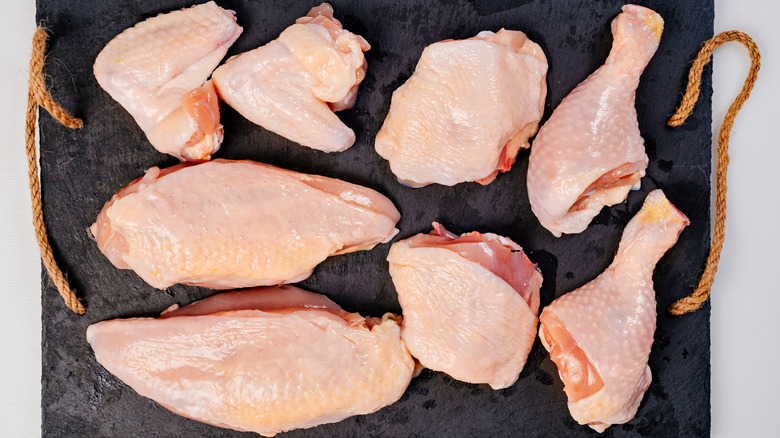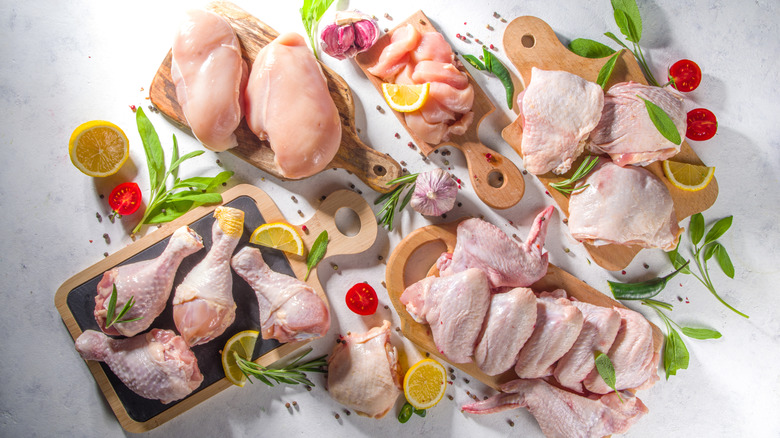Why It's Safest To Cook White And Dark Meat Chicken Separately
When it comes to chicken, timing is everything. Overcooked chicken lacks flavor and texture, and undercooked chicken poses a health risk. That's why it's safest to cook white and dark meat separately. Regardless of what kind of meat you prefer, always cook chicken to a safe internal temperature of 165 degrees Fahrenheit.
The real difference between white and dark meat is the relative size and fat content. Whether you're deep-frying or baking, you have to account for these factors to achieve the perfect, golden-brown exterior and juicy inside. Breasts are larger and leaner, so they require more exposure to heat to kill off harmful bacteria. Thighs, drumsticks, and legs, on the other hand, are smaller and contain more fat, so they cook much faster. Wings are considered white meat despite having more fat, but their small size means that they cook more similarly to dark meat. Accounting for how fast a specific cut cooks is the best way to ensure that it's both tasty and safe, a winning combination for any chicken dinner.
For dishes where you can't separate meats, such as stir fries, it's best to use only one kind. Even if dark and white meat are sliced to the same size, there's still some risk of not cooking them evenly, and the differences in taste and texture can be jarring. Luckily, it's easy to separate meats for most other forms of cooking.
How to separate dark and white meats for different cooking methods
Buying whole chickens is far more economical than purchasing separate cuts. Some people are intimidated by the idea of doing their own butchering, but we have a step-by-step guide to cutting a whole chicken that simplifies the process. This not only saves you money but ensures safe cooking practices without having to cook the entire chicken at once.
On the grill, separate white and dark meats. Since breasts take longer to cook, they need more exposure to lower heats to prevent their exteriors from burning. Dark meat, however, loves hot and fast cooking times to provide just a bit of char without drying the meat out.
Deep frying is a great way of cooking both dark and light meats because you can only fit so much chicken in the pot at once. By separating the cuts, you don't have to juggle which pieces to remove first. Once you've confirmed a cut is finished, fish out the rest and move on to the next batch.
When pan frying, sauteing, or searing different cuts of chicken, start with the white meat. Since these pieces are more dense and benefit from resting anyway, put them on a separate plate and cover them with tin foil. This lets the juices congeal a bit while the dark meat finishes in the pan — a win-win strategy!


